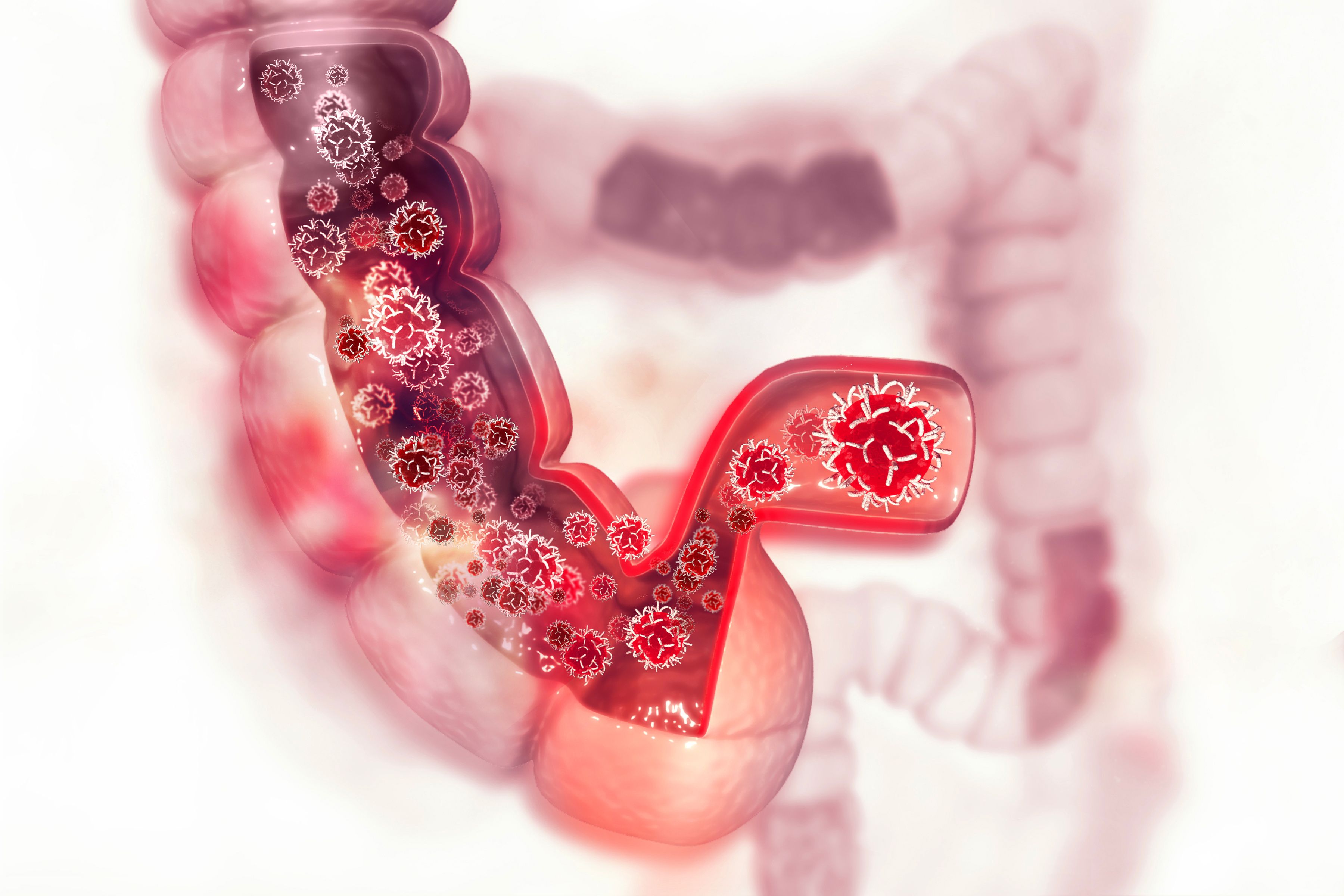UHPLC–MS-Based Method Used to Test Potential Colorectal Cancer Treatment
A recent study led by Wei Zhu of the Chinese Academy of Sciences in Hangzhou, China explored using ultrahigh-pressure liquid chromatography–mass spectrometry (UHPLC–MS) and non-targeted metabolomics studies to measure how saponins from Lysimachia capillipes Hemsl can be used to detect and treat colorectal cancer. Their findings were published in the Journal of Pharmaceutical and Biomedical Analysis (1).
Colon cancer. Cancer attacking cell. Colon disease concept | Image Credit: © Crystal light - stock.adobe.com

Colorectal cancer (CRC) is one of the most diagnosed cancers, and it is known to have high morbidity and high mortality rates. CRC forms in the human body when cancerous polyps grow on the inner lining of the colon or rectum. This disease can also move into blood vessels and lymph nodes, depending on how deep growths spread into the walls (2). According to the World Health Organization (WHO), approximately 1.23 million cases of CRC occur annually, and though there has been progress in understanding underlying mechanisms behind CRC, therapeutic efficacies and survival rates are still very limited (Where did the WHO data come from?).
To discover new drugs to address CRC, the research team began to look at traditional Chinese medicines (TCM), which have been used to treat various illnesses, some of which have reportedly exhibited anti-tumor properties in clinical experiments. According to the team, Southeast China has a long tradition of using Lysimachia capillipes Hemsl. (LC), a perennial plant in the primulaceae family, can serve as an herbal remedy. Upon researching the plant, they deduced that Lysimachia capillipes Hemsl. exhibits strong anti-tumor activities in vivo and in vitro; however, LC-A, a rarer secondary saponin in Lysimachia capillipes, was not previously studied in-depth. For this experiment, the scientists aimed to clarify the LC-A metabolic profile and evaluate its effectiveness against CRC. This was done by identifying differential metabolites in mice plasma. Additionally, LC-A metabolites were characterized in vivo using ultrahigh-pressure liquid chromatography-triple time-of-flight mass spectrometry (UHPLC-Triple-TOF/MS) detection.
For this study, LC-A and its metabolic products were identified in rat plasma, feces, and urine using a LC–MS platform. Additionally, LC–MS-based metabolomics were used to investigate how LC-A can be used against CRC. Following the experiments, LC-A was showed to significantly inhibit CRC cell proliferation, attenuate tumor growth, and right metabolic abnormalities in afflicted mice. Additionally, the levels of p-cresol sulfate and phenylacetylglycine in the CRC model plasma decreased, with increments in sphingosine 1-phosphate, D-tryptophan, and L-2-aminoadipic acid. LC-A treatment was able to reverse these alterations, which were related to sphingolipid and amino acid metabolic pathways. This experiment demonstrated that LC-A anti-CRC effects were regulated via metabolism modulation. These findings, in addition to seven LC-A metabolites being characterized in the different samples, offer foundations for using LC-A to treat colorectal cancer.
References
(1) Li, W.; Zhang, X.; Feng, Y.; Han, H.; Cai, J.; Zhao, H.; Li, S.; Tian, J.; Zhu, W. Deciphering the Metabolic Profile and Anti-Colorectal Cancer Mechanism of Capilliposide A Using Ultra Performance Liquid Chromatography Mass Spectrometry Combined with Non-Targeted Metabolomics Studies. J. Pharm. Biomed. Anal. 2023, 234, 115548. DOI: 10.1016/j.jpba.2023.115548
(2) What is Colorectal Cancer? American Cancer Society, Inc. 2024. https://www.cancer.org/cancer/types/colon-rectal-cancer/about/what-is-colorectal-cancer.html (accessed 2024-3-4)
TD-GC–MS and IDMS Sample Prep for CRM to Quantify Decabromodiphenyl Ether in Polystyrene Matrix
April 26th 2024At issue in this study was the certified value of decabromodiphenyl ether (BDE 209) in a polystyrene matrix CRM relative to its regulated value in the EU Restriction of Hazardous Substances Directive.
LC–MS/MS-Based System Used to Profile Ceramide Reactions to Diseases
April 26th 2024Scientists from the University of Córdoba in Córdoba, Spain recently used liquid chromatography–tandem mass spectrometry (LC–MS/MS) to comprehensively profile human ceramides to determine their reactions to diseases.
High-Throughput 4D TIMS Method Accelerates Lipidomics Analysis
April 25th 2024Ultrahigh-pressure liquid chromatography coupled to high-resolution mass spectrometry (UHPLC-HRMS) had been previously proposed for untargeted lipidomics analysis, but this updated approach was reported by the authors to reduce run time to 4 min.